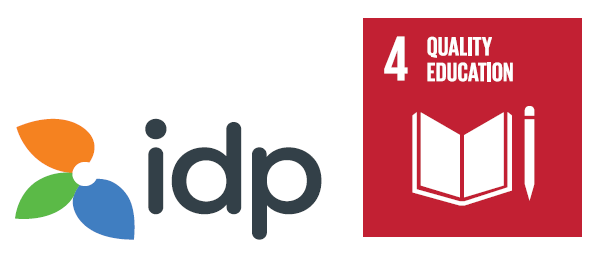Investing for good: Applying the UN SDGs to investing in Australian shares
In 2017, Alphinity began to apply a Sustainable lens to the investments in the Alphinity Sustainable Share Fund (the Fund). This has become a positive screen for the Fund to supplement the more conventional negative screens, i.e. excluding companies engaged in undesirable activities and companies with poor Environmental, Social and Governance (ESG) practices. Alphinity’s approach has since evolved into applying a net Sustainability score to each company based on its products/services and operations.
The Fund’s portfolio aims to be biased towards companies “doing good”, i.e. those making net contributions towards achieving one or more of the UN Sustainable Development Goals (SDGs). It also seeks to avoid companies whose activities are inhibiting the achievement of the Goals. The SDGs are an internationally agreed framework to achieve a better world.
The Origins and Evolution of Sustainable Investing
The origins of Socially Responsible Investing (SRI) can be traced back to the Quaker and Methodist movements in the mid-eighteenth century. Around the same time, Methodist leader John Wesley urged his followers to shun profiting at the expense of their neighbours. It was in the 1960s and 70s that SRI started to become more prominent along with the US civil rights movement, an increasing awareness of environmental issues and the start of the anti-apartheid movement in which a number of universities, churches and cities pulled their investments in companies with operations in South Africa.
SRI has seen many iterations and interpretations over the last 50 years, moving from merely excluding certain activities to also negatively screening out stocks based on the ESG qualities of a company. ESG however tends to focus more on the internal operations and processes of a company and less on external activities that might cause good and/or bad outcomes.
More recently there has been growing interest in Impact Investing, which aims to achieve “good” social or environmental outcomes. One major issue has been the lack of an agreed and unified system defining what a good and bad outcome might be, and the activities that cause them. There is also some debate around whether buying shares in companies on the secondary market can really be having an impact, or whether you are just joining efforts that are already being made, and that Impact Investing is arguably only credibly exercised by asset-owners in the unlisted space. Notwithstanding this, we believe aligning yourself with companies doing good for society is still a worthy ambition and improves the financial ability to pursue activities contributing to these goals. In addition, if executed well, it can also be financially rewarding.
The UN Sustainable Development Goals (SDGs)
In 2015, the United Nations agreed to a unifying set of 17 goals which, if achieved by 2030, would make the world a significantly better and more equitable place to live. The goals address high priority problems which, in the eyes of governments, must be solved in order to reach desirable levels of global development in a sustainable way. The 17 goals have been expanded into 169 detailed underlying targets.
Figure 1: The UN Sustainable Development Goals
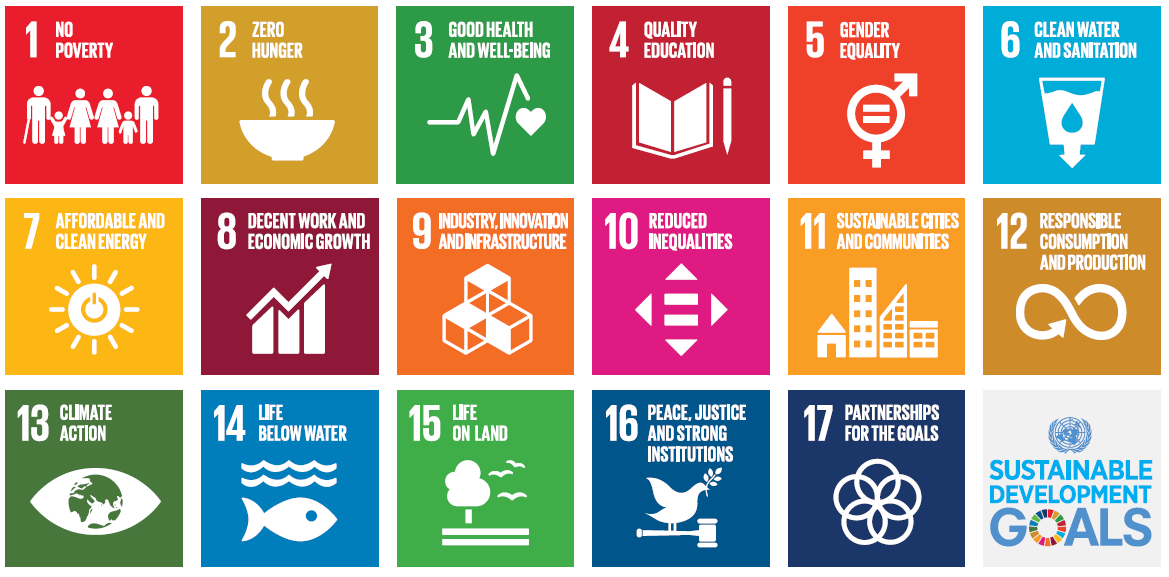
This next wave of Sustainable Investing aims to actively support positive investment outcomes, not just try to eliminate negative outcomes. One challenge is that the SDGs were largely designed to direct government priorities rather than business activities: they largely describe what countries need to do (or stop doing) to achieve the goals and identify the structural changes that need to take place in the economy. While there are some SDGs that companies will generally struggle to meet, they can still be used to map prospects for Australian companies.
An issue for developed economies like Australia’s is that for some SDGs, the gap between desired outcome and the current situation can be quite small or even non-existent: it is in developing countries that more action is required to close some of the much larger gaps. For example, the goal of defeating poverty – which is defined by the UN as an income under $US1.25 per person per day – is not relevant for Australia. While there is certainly relative poverty in Australia which might be addressed by some company activities, absolute poverty – as defined by the UN – is virtually non-existent. But there are plenty of companies which can contribute significantly to other SDGs by doing things such as producing lithium for batteries, developing hydrogen technologies to reduce carbon footprint, making pharmaceuticals to improve health, or providing healthy food for people in Australia and beyond.
For more domestically-focused companies, it’s helpful to remember that some activities help to maintain development goals. For example, healthcare companies can continue to provide services which maintain the goal of Good Health and Well-being (SDG 3).
The SDGs relevant to Australian companies
Of the 17 SDGs, we believe that Australian companies can provide the most material contribution to:
- Zero Hunger/Good nutrition (SDG 2)
- Good Health and Well-being (SDG 3)
- Quality Education (SDG 4)
- Affordable and Clean Energy (SDG 7)
- Infrastructure (SDG 9)
- Sustainable Cities (SDG 11)
- Responsible Consumption and Production (SDG 12)
- Climate Action (SDG 13)
A number of Australian companies address two SDGs – Responsible Consumption and Production (SDG 12) and Climate Action (SDG 13). Sectors that score well within these Goals are resource companies producing essential metals for development, healthcare, insurance and utilities, waste management, tech and telecommunications.
Sectors such as energy and consumer staples that have significant resource footprints in water, waste and land use tend to score poorly on the waste (SDG 12) and climate (SDG 13) goals. Some consumer staples companies contribute to obesity and lifestyle disease by producing highly processed food or sugary drinks; these tend to score poorly on nutrition (SDG 2).
Alphinity applies the SDGs to Australian companies to build a portfolio that supports the social priorities of the UN
The Alphinity team and the external sustainability experts on the Sustainable Share Fund Compliance Committee have been applying SDG considerations to the Australian equity universe, seeking to identify the opportunities and risks facing each company in the investable universe to give a net SDG score to each company. This is a high-level process that requires good data and, importantly, sound judgement. Alphinity is also working closely with Citigroup, leaders in Sustainable research, to help apply the SDGs to our investment process.
The chart below indicates the number of Goals partially or fully addressed by companies in the portfolio, and the net contribution of each. It can be observed that the Fund’s holdings have an average net positive score (0.86) more than double that of the coverage universe (0.38). This individual company analysis has additional benefits of identifying areas of company engagement and also companies that might benefit from macro tailwinds.
Figure 2: The net SDG contribution for each company in the Alphinity Sustainable Share Fund, November 2019
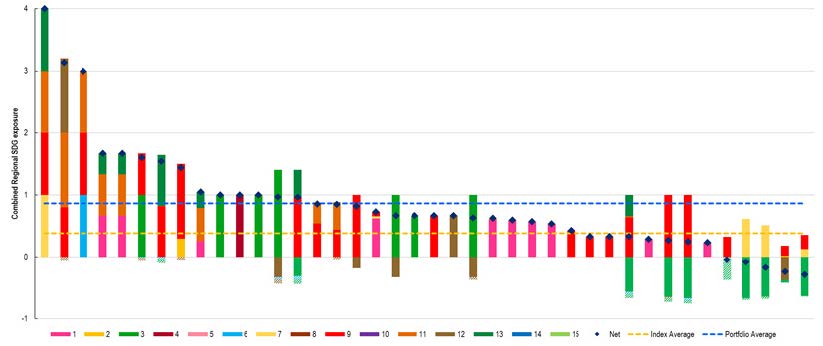
Source: Alphinity, November 2019
Examples of Companies that contribute positively to SDGs
IDP Education – SDG score of +1
IDP provides student placement and international study opportunities in English speaking countries and therefore contributes to SDG4 (Quality Education). In addition, it provides English courses and tests. IDP’s presence in developing economies will, over time, build on the base of tertiary-qualified doctors, nurses and engineers and help build those countries’ social and economic infrastructure.
Risks and engagement: An area of on-going company engagement is increasing our understanding of how IDP manages fraud risk in its language testing operations.

QBE – SDG score of +1.67
QBE provides essential insurance and asset protection, reducing peoples’ vulnerability to climate, economic, environmental and social disasters. In addition, QBE Premiums4Good product allows customers to direct proportion of premium to investments in securities with social objective. QBE pledged AUD 100 million to social impact bonds between 2015 – 2018. QBE contributes to SDG1 (No Poverty), SDG11 (Sustainable Cities and Communities) and SDG13 (Climate Action).
Risks and engagement: The company is exposed to the underwriting risk from the physical impacts of Climate Change and Alphinity has been engaged with QBE understanding how it will mitigate these risks. QBE has integrated climate change thinking into its products and pricing and established a Climate Change Working Group to assess risks and opportunities. It has also introduced a new IT system that will help it to reduce the risk of corruption and bribery.
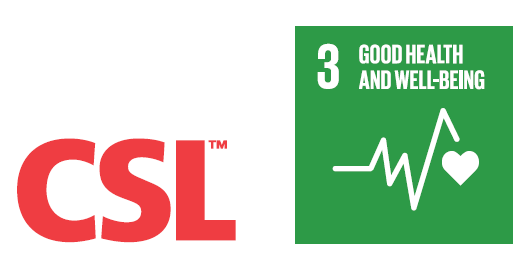
CSL – SDG score of +1.13
CSL is the global leader in Immunoglobulin (antibodies produced by blood plasma) that can treat immune deficiencies and neurological disorders. Their plasma also treats haemophilia and respiratory diseases and CSL is also the leader in flu vaccines. CSL contributes to SDG3 (Good Health and Well-being).
Risks and engagement: Areas of risk and engagement with CSL are its biomedical waste generation and its animal treatment practices. These risks potentially have a negative impact on SDG12 (Responsible Consumption and Production) and SDG15 (Life on Land).
How Alphinity incorporates the SDGs into the investment process
Step 1: Define the investable universe
We begin with the ASX300 and apply a screen to identify companies with adequate liquidity which:
- Perform activities compatible with the Fund’s Charter
- Have strong ESG characteristics
- Support one or more of the UN SDGs
Companies generating more than 10% of revenues from activities considered incompatible with the Fund’s Charter, such as high impact fuels, gold mining, and animal mistreatment are excluded from the investable universe.
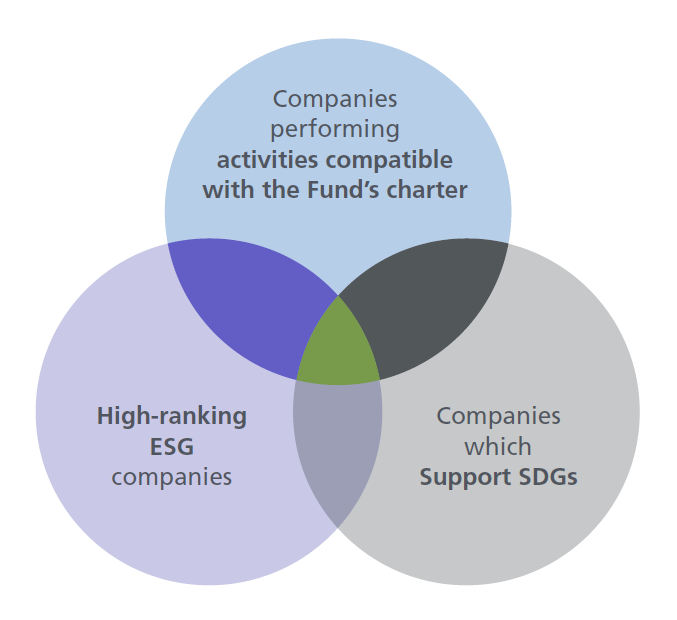
Many companies provide inadequate disclosure on how they perform according to the UN SDGs so Alphinity uses the research databases of independent research organisations, MSCI and Citi along with the Sustainable Share Fund Compliance Committee to gain further insights.
Step 2: Find compelling sustainable companies
Using Alphinity’s investment philosophy and process, we combine Fundamental and Quantitative research to identify quality, undervalued companies in an earnings upgrade cycle.
Step 3: Construct a balanced portfolio of 35-55 companies with attractive investment fundamentals and prospects. We do not identify with any particular investment “style” as our approach has proven successful though a number of different market cycles, although our process will typically have a slight bias towards growth.
Find out more
For more information, please contact your financial adviser, call the Fidante Partners Investor Services team on +61 13 51 53 or visit alphinity.com.au


